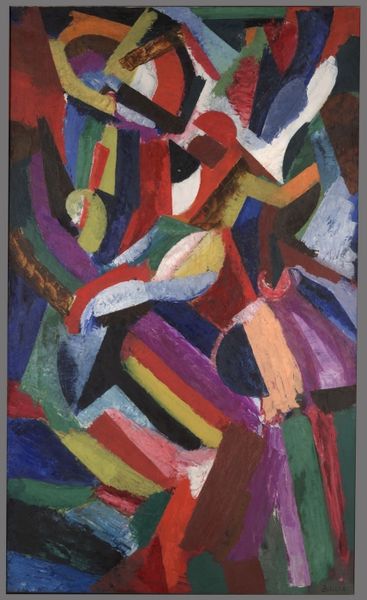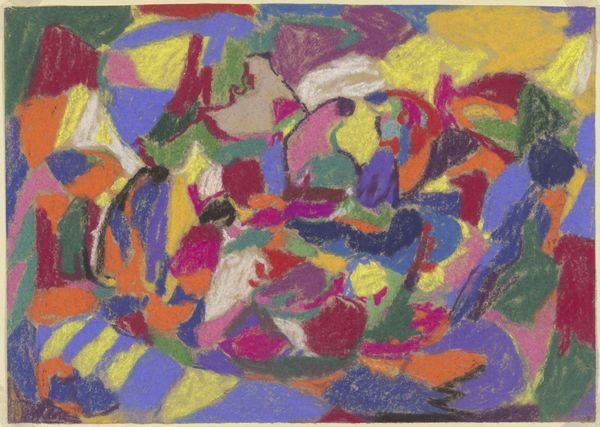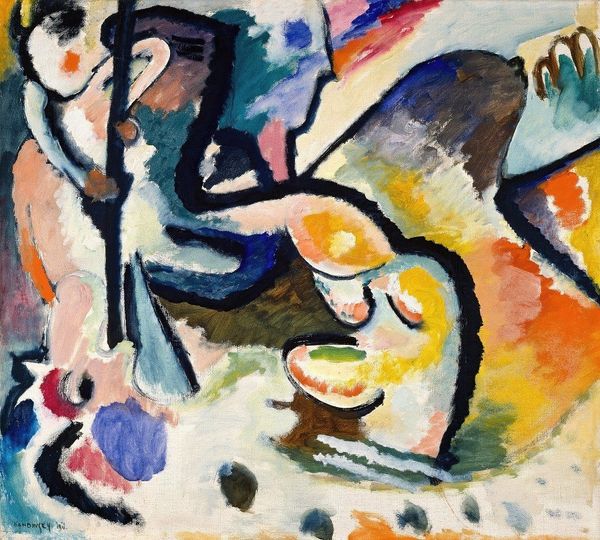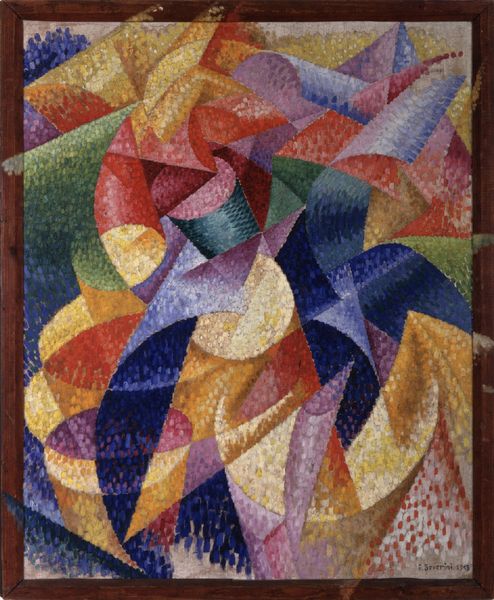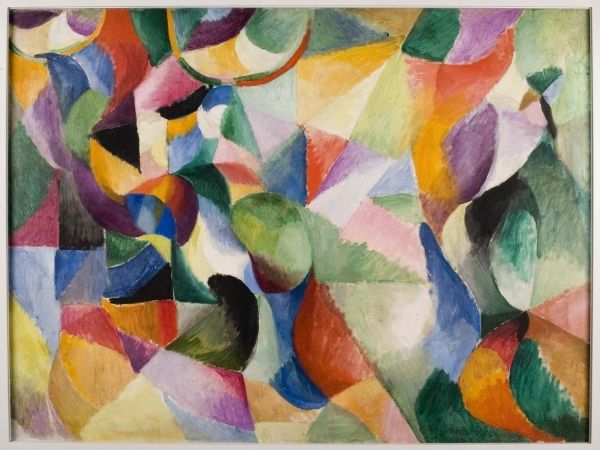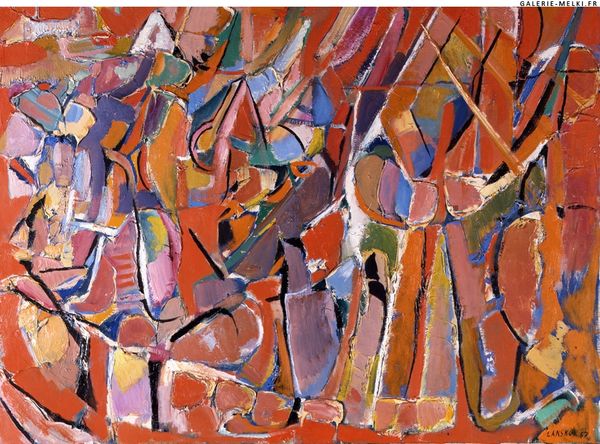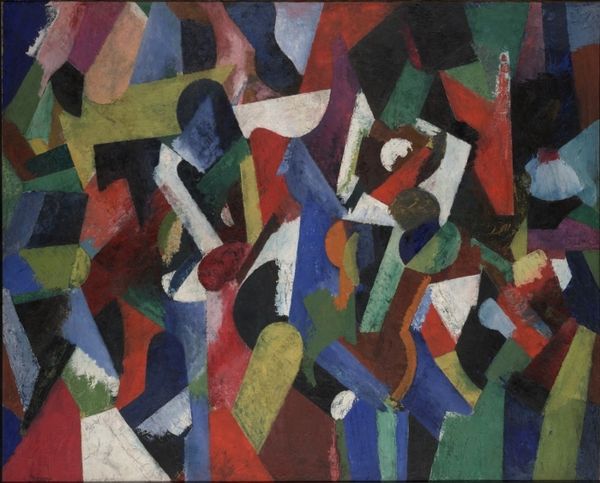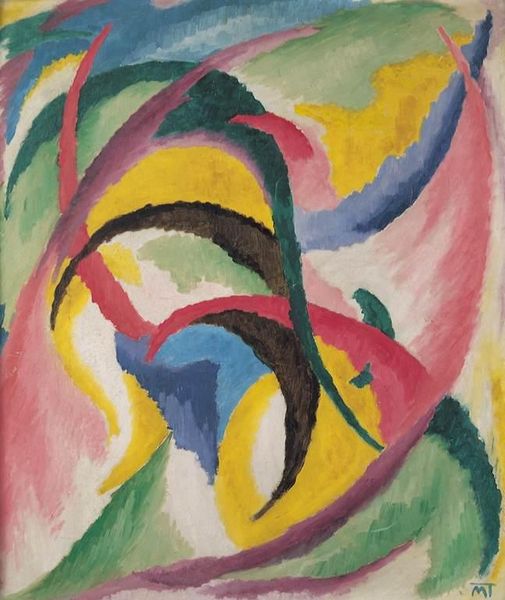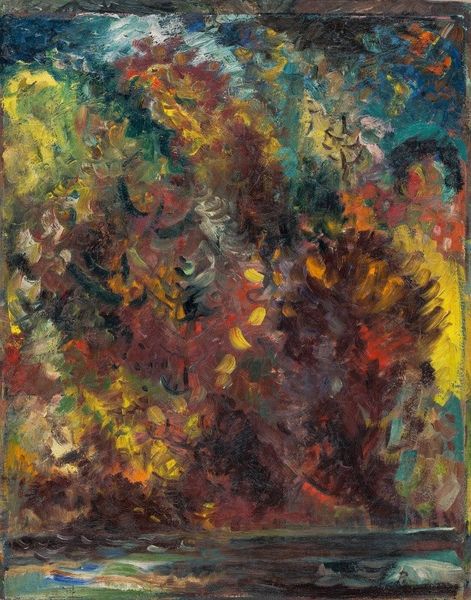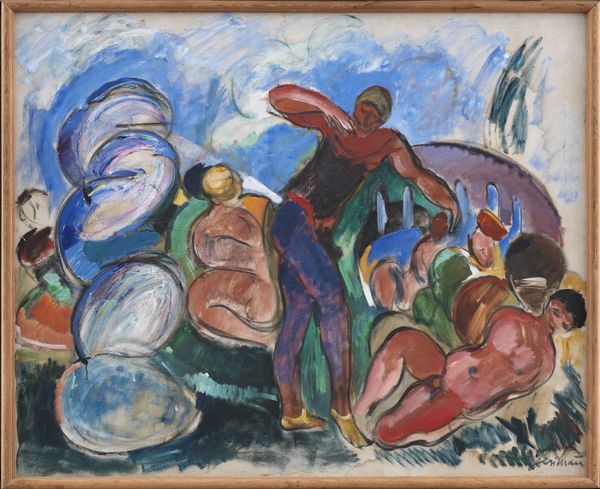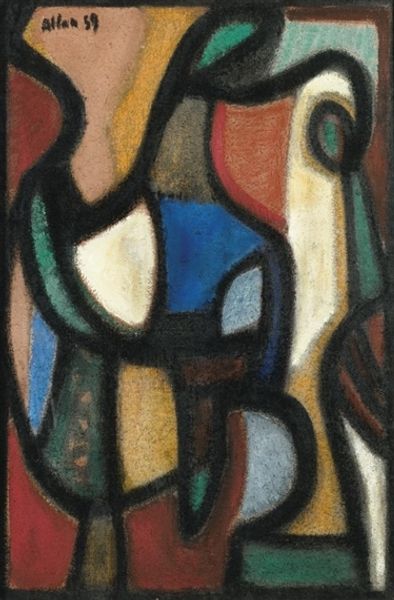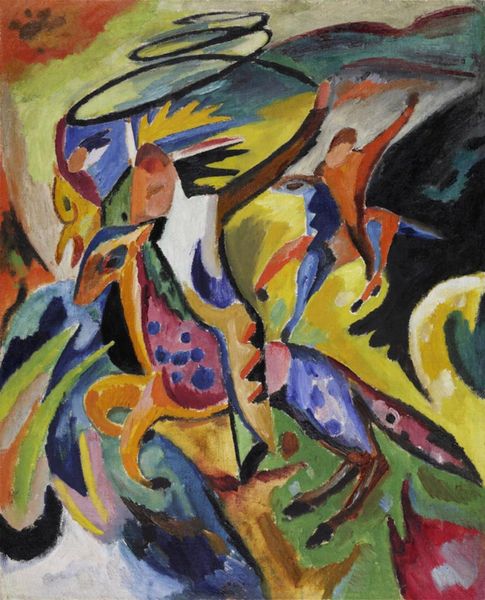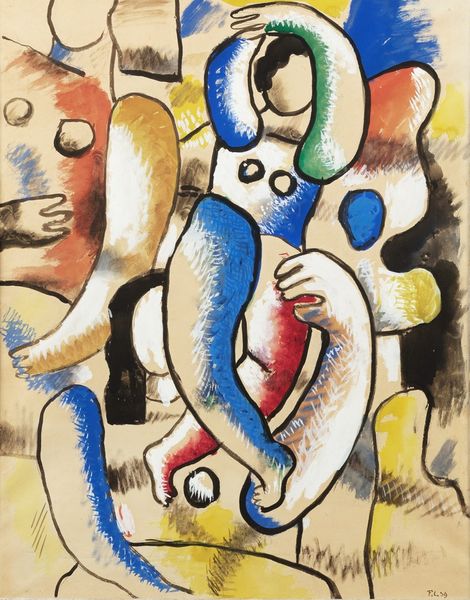
matter-painting, painting, oil-paint
#
matter-painting
#
non-objective-art
#
painting
#
oil-paint
#
german-expressionism
#
oil painting
#
geometric
#
expressionism
#
abstraction
Dimensions: 74.5 x 100 cm
Copyright: Public Domain
Editor: This is Wilhelm Morgner's "Astrale Komposition VI," created in 1912. It’s an oil painting, but the surface almost looks sculptural, like thick impasto. I'm curious, with those dynamic brushstrokes, what are your thoughts on the artistic techniques used here? Curator: Looking at the heavy application of oil paint in "Astrale Komposition VI," it’s important to consider how Morgner, like many German Expressionists, used materiality to challenge academic traditions. The very act of slathering the paint onto the canvas becomes a statement. Consider the labor involved, the deliberate choice of thick impasto—how does this technique inform our understanding of the artist's process and intentions, beyond mere representation? Editor: So, it’s less about *what* is painted and more about *how* it’s painted? How does that challenge the established art world? Curator: Exactly! The rough, almost violent application of paint disregards traditional notions of refined artistry, bringing attention to the physical act of creation itself. This was also a period of significant industrial change; doesn’t Morgner’s material emphasis echo and possibly critique the increasing mechanization of labor? What societal changes might be mirrored in this piece? Editor: I hadn’t thought of it that way. I guess the intense brushwork reflects the anxieties of that era. Is that a common thread in German Expressionism? Curator: Indeed. Think of the way materials—and the processes behind them—convey meaning. Expressionism, at its core, questioned established social orders, and this materiality, the emphasis on artistic labor, became a powerful tool for expressing dissent. It blurs the lines between craft and fine art. Editor: That gives me a whole new perspective. It’s not just abstract shapes; it's a physical expression of societal anxieties and a shift in artistic values. Curator: Precisely. Seeing art as a product of specific materials, processes, and social contexts offers a much richer understanding than simply focusing on subject matter alone.
Comments
stadelmuseum almost 2 years ago
⋮
In 1912/13, Wilhelm Morgner created 26 oil paintings and numerous works on paper, which he called Astral Compositions. These works are evidence of his rapid transition from figurative-ornamental depictions to the reproduction of internal processes, in which he gave greater autonomy to the primary colours. Morgner carried out this process based on his central theme of the working man in the field. He increasingly blended the figures with the surrounding space in order to visualise the metaphysical “unification” of man and nature. Astral Composition VI shows an advanced stage of development in this process, even though a shadowy silhouette can still be identified in the middle ground. Morgner only created non-representational works until 1913, as he did not want to detach himself completely from nature in the long run. Astral Composition VI illustrates the state of suspension between figuration and abstraction, to which a special position in German Expressionism must be conceded.
Join the conversation
Join millions of artists and users on Artera today and experience the ultimate creative platform.
